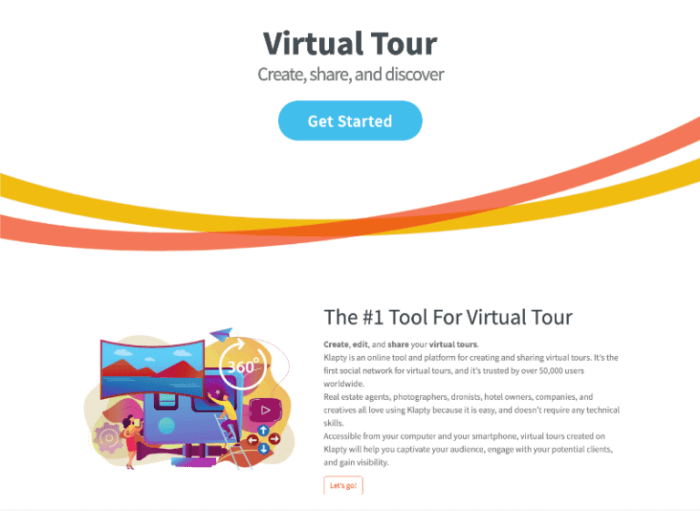real estate virtual tours software sets the stage for this enthralling narrative, offering readers a glimpse into a story that is rich in detail and brimming with originality from the outset. The use of virtual tours in real estate has revolutionized the way properties are showcased, allowing potential buyers to explore listings from the comfort of their homes. With the advancement of technology, these tours have become more immersive and accessible, leveraging tools such as 3D modeling and VR compatibility to create engaging experiences that significantly enhance property viewing.
This guide delves into the various types of virtual tour software available, highlighting key features, integration possibilities, and effective marketing strategies that can elevate a real estate professional’s offerings. As the demand for interactive property tours continues to rise, understanding the landscape of virtual tours becomes essential for agents looking to stay competitive in the market.
Overview of Real Estate Virtual Tours Software
Virtual tours have revolutionized the way properties are showcased in the real estate market. By allowing potential buyers to explore properties remotely, virtual tours enhance the buying experience and streamline the sales process. The benefits of using virtual tours include increased engagement, wider audience reach, and the ability to highlight unique property features without requiring in-person visits.
Creating virtual tours involves sophisticated technology and tools, including 360-degree cameras, VR software, and interactive mapping tools. These technologies empower real estate agents to present properties in a captivating manner. Recent statistics indicate that the adoption of virtual tours has surged, with approximately 70% of buyers preferring to view listings with virtual tours over traditional photographs.
Types of Virtual Tours Software
The market offers a variety of virtual tour software options catering to different needs in real estate. These tools can be categorized based on their features and capabilities. The most common types include:
- 3D Modeling Software: Creates photorealistic 3D representations of properties.
- VR-Compatible Software: Enables immersive experiences using virtual reality headsets.
- Web-Based Platforms: Allow easy sharing and accessing of virtual tours via browsers.
A comparative analysis of different software options reveals their unique features and pricing. Below is a table showcasing this information:
| Software Name | Key Features | Pricing |
|---|---|---|
| TourWizard | 3D modeling, VR compatibility, customization | $49/month |
| Matterport | High-resolution imagery, mobile-compatible | $69/month |
| Realvision | Interactive floor plans, video integration | $59/month |
Key Features to Look for

When selecting virtual tour software, real estate professionals should prioritize several essential features. Customization options are particularly important, as they allow agents to tailor tours to reflect the unique aspects of each property.
A checklist of must-have features for effective virtual tours includes:
- High-resolution image support
- Interactive elements (hotspots, links)
- Multi-device compatibility
- Analytics for tracking viewer engagement
Integration with Real Estate Platforms
Virtual tour software should seamlessly integrate with popular real estate listing platforms, enhancing visibility and accessibility. To embed virtual tours into property listings, agents can follow straightforward steps provided by the software.
“After integrating virtual tours into our listings, our agency saw a 30% increase in buyer inquiries within the first month.” – A successful real estate agency
Best Practices for Creating Virtual Tours

Designing and creating engaging virtual tours involves a series of steps that ensure high-quality presentations. High-resolution images and videos are crucial for capturing the essence of a property.
Best practices for real estate agents when creating virtual tours include:
- Using wide-angle lenses for capturing space
- Staging properties to enhance visual appeal
- Incorporating clear navigation tools for users
Marketing Virtual Tours
Effectively marketing virtual tours to potential buyers requires strategic approaches. Social media platforms and online advertising play a significant role in promoting these tours.
Here’s a comparison of different marketing channels and their effectiveness for virtual tours:
| Marketing Channel | Effectiveness Rate |
|---|---|
| Social Media Ads | 45% |
| Email Campaigns | 30% |
| Website Integration | 25% |
Cost Considerations
Understanding the costs associated with virtual tour software and its implementation is critical for real estate agents. Typical expenses include software subscriptions, equipment costs, and potential training for staff.
Potential return on investment is significant, as properties with virtual tours tend to sell faster and at higher prices.
Cost-saving tips for agents looking to implement virtual tours include:
- Utilizing free trials to test software
- Investing in multi-purpose equipment
- Bundling services for discounts
Future Trends in Virtual Tour Technology, Real estate virtual tours software
Emerging trends in virtual tour technology are poised to reshape the real estate industry. Advancements in augmented reality (AR) and virtual reality (VR) are enhancing the way properties are showcased, providing more immersive experiences.
The potential for AI integration in virtual tour software could significantly improve user experiences, offering personalized recommendations and interactive features that cater to individual preferences.
Last Recap: Real Estate Virtual Tours Software

In summary, leveraging real estate virtual tours software not only transforms the way properties are presented but also enhances the overall buyer experience. By implementing best practices and staying abreast of emerging trends, real estate professionals can maximize their marketing efforts and achieve greater success. As technology continues to evolve, embracing these innovative tools will be crucial for agents aiming to meet the demands of today’s discerning buyers.
